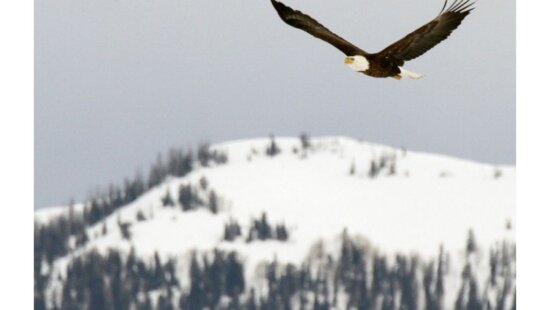Wildlife
DWR establishes feeding areas in Summit County to help struggling deer survive the winter

Mule deer doe in the snow with her thick winter coat. Photo: TownLift // Kevin Cody.
SUMMIT COUNTY, Utah — The above-average snow year is a blessing for many aspects of the environment across the state, but it doesn’t come without its downsides, as snowfall and deep snow make surviving harder for wildlife.
In Summit and Rich Counties, the Utah Division of Wildlife recently conducted health checks on big game and found that deer in the area have below-average body fat conditions. DWR is taking a two-pronged approach to combat the problem with additional patrols to reduce human-caused stress and establish 11 emergency feeding areas in Rich County and one in Summit County.
Since early December, DWR has actively monitored big game animals through health and body condition assessments. To do this, DWR captures deer via a helicopter and then transports them to a location where biologists are waiting. The animal’s body condition, fat levels, and fawn weights are measured and recorded. This year’s snowfall has made finding food difficult for deer, as evidenced by the results of these studies.

“In the areas where we’re feeding, the vegetation that deer eat in the winter is completely covered by snow,” said Jim Christensen, the DWR Northern Region wildlife manager.
“Mule deer have evolved with harsh weather, and a few deer dying in years with severe weather is expected,” said Dax Mangus, the DWR big game coordinator. “This natural cycle can actually benefit a deer population by removing sick animals and older animals that aren’t contributing to the population through reproduction. However, there are times and areas when winter weather is so severe that it becomes necessary to implement emergency feeding to protect adult does, which are the reproductive segment of the deer population. Even with emergency feeding, we still anticipate the loss of some fawns and sick or old animals.”
At the feeding areas, formulated pellets will be dispersed to help meet the nutritional need of deer. Biologists only use these pellets to feed deer, while food sources such as alfalfa, grass hay, or other products will not be used.

“Deer will eat hay, but if that is their only source of feed during the winter, they can have a very difficult time digesting it,” Christensen said. “We often find dead deer with stomachs filled with hay. We appreciate people wanting to help the deer, but we strongly discourage people from feeding hay or other things to deer. These are special circumstances that follow Division policies, involve trained professionals and utilize specialized feed. We still recommend that the public doesn’t feed wildlife, due to safety concerns, among other things.”
While these areas are the current targets, additional feeding locations may be necessary. One determining factor that would make an area unfit is if chronic wasting disease was found. The disease affects the nervous system of deer, moose, and elk. The animal will develop brain lesions, become emaciated, and have a lethargic appearance. The animal will also have droopy ears and may salivate excessively before it eventually dies.

“Chronic wasting disease is fatal to deer that contract it, and it’s highly contagious,” Mangus said. “Congregating deer at a feeding location increases the chance that a deer with chronic wasting disease will pass it on to other deer. The short-term benefits of feeding do not outweigh the negative long-term consequences of spreading chronic wasting disease in a highly congregated deer population.”
With food difficult to find and animals relying on fat reserves to survive, repeated stress and excessive energy use from having the flee situations can be fatal.
“We strongly encourage people — especially those who might be searching for shed antlers this winter — to give the animals plenty of space,” Christensen said.
“Our officers can’t be everywhere, so we encourage those who spot people harassing deer or any type of wildlife to contact us,” said Lt. David Beveridge with the DWR Northern Region.
Intentionally harassing wildlife is a Class B misdemeanor in Utah, which could amount to a fine of up to $1,000 and up to six months in jail.
Wildlife harassment can be reported through the following ways: call the UTip Hotline at 800-662-3337, notify DWR through the UTDWR Law Enforcement app, text 847411 with the message UTIPNRO to reach officers in Northern Utah or through the DWR website.
DWR reminds the public to take free mandatory Antler Gathering Ethics course


















